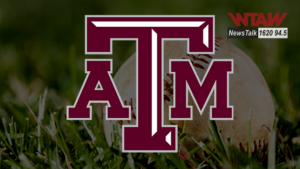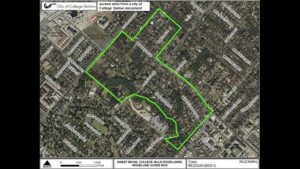The Texas A&M Veterinary Emergency Team (VET) provided more than 4,500 services to 952 patients at Operation Border Health Preparedness (OBHP), Texas’ largest disaster preparedness event, from July 22-26.
This was the team’s fourth year to participate in OBHP, an annual exercise hosted by the Texas Department of State Health Services that provides emergency response teams across the state the opportunity to test their readiness for the next major disaster while also providing basic medical and veterinary care to a community that might otherwise go without.
“Service is what the VET does best, and OBHP provides an opportunity for our team to practice serving our fellow Texans while also practicing the deployment readiness skills required to respond to major disasters like wildfires, floods and hurricanes,” said Dr. Deb Zoran, VET director.
Deploying Across Texas
Disaster response begins with deploying a team to a community in need and requires skills like hauling trucks and trailers, establishing a base of operations, setting up medical platforms, establishing animal housing areas and ensuring the safety of the animals and clients the team serves as well as the VET members.
“Disaster response requires us to travel several hundred miles with all of the equipment we may need to successfully complete our mission,” Zoran said. “It is no small task to transport dozens of people as well as everything we need to establish a base where the team will provide basic veterinary care, house affected animals, reunite owners and their pets, eat, sleep and ultimately serve those in need. It takes practice to do that well, and OBHP is the perfect place to practice these skills.”
The weekend before OBHP, the VET gathered at The Texas A&M University System RELLIS campus, where the team’s equipment is housed. Before the sun rose, VET members loaded trucks and trailers with the equipment and supplies needed for their OBHP mission. As the first signs of daylight hit the Texas pavement, the team was already on the road to Raymondville, the town in Willacy County where they’d been sent to serve.
“When we arrived at our location, the team was tasked with various aspects required to establish a base of operations,” Zoran said. “Together, we set up our base and medical platforms, pet-proofed our workstations, and practiced using the space as a working veterinary clinic.”
The following day, the team practiced using the VET’s medical records system with practice case walk throughs so that team members were ready for the first patients to arrive on Monday.
“It’s critical that we have this time to practice these skills,” Zoran said. “Every minute counts in disaster response, and exercises like OBHP give us the chance to improve these skills so that we can start helping the next community affected by a major disaster as soon as possible.”
Serving A Community In Need
OBHP also provides hands-on experience for VET members and students alike, showing them the importance of serving a community in need.
“In previous years, we’ve heard from community members that OBHP is important because it provides the basic vaccinations and preventative medicine that they otherwise travel sometimes an hour or more to receive — usually after scheduling a veterinary appointment almost a year in advance,” Zoran said. “It is an honor to have the opportunity to serve our fellow Texans during OBHP. We know the importance of the human-animal bond, and we enjoy serving both the animals and the people who love them at OBHP.”
The VET was joined at OBHP by Doctor of Veterinary Medicine students from the Texas A&M School of Veterinary Medicine and Biomedical Sciences as well as volunteers in the veterinary profession from around the country with an interest in learning more about disaster response and community service.
“In underserved areas such as Raymondville, access to basic veterinary care is limited or nonexistent,” said Maleea Jordan, a fourth-year veterinary student who served with the VET at OBHP. “By bringing services directly to these communities, we ensure that pets receive necessary vaccinations and treatments. This proactive approach not only improves animal welfare but also reduces the risk of disease outbreaks and minimizes public health concerns related to zoonotic diseases. Such moments highlight the profound difference even basic veterinary interventions can make in improving the well-being of animals and their families.”
Standing Ready For The Next Disaster
In addition to training VET members to respond to the next major disaster, OBHP gives future Aggie veterinarians hands-on experience in disaster preparedness and response.
“It’s really a mutually beneficial experience for the students,” Zoran said. “They provide veterinary care to a community in need and, in turn, they learn about disaster response and what it means to serve as a leader in disaster response efforts.”
Jordan was among the 20 veterinary students who participated in OBHP in 2024.
“This journey has enriched both my professional expertise and personal growth, as well as created an environment fostering empathy, resilience and a renewed dedication to serving those most in need,” Jordan said.
Zoran said she is thankful to the students, VET members, volunteers and monetary supporters of the VET’s OBHP mission.
“We provide this care with compassion, and we do it at no cost to our OBHP clients thanks to the generosity of our donors,” Zoran said. “Our OBHP supporters include the Banfield Foundation, Boehringer Ingelheim, Elanco, Dechra, Hill’s Pet Nutrition, The Association of Former Students, and an individual donor. Their generosity empowered us to provide veterinary services for free at OBHP. We are incredibly thankful for their support and for the opportunity to serve at OBHP.”
By Rachel Knight, Texas A&M University School of Veterinary Medicine and Biomedical Sciences




